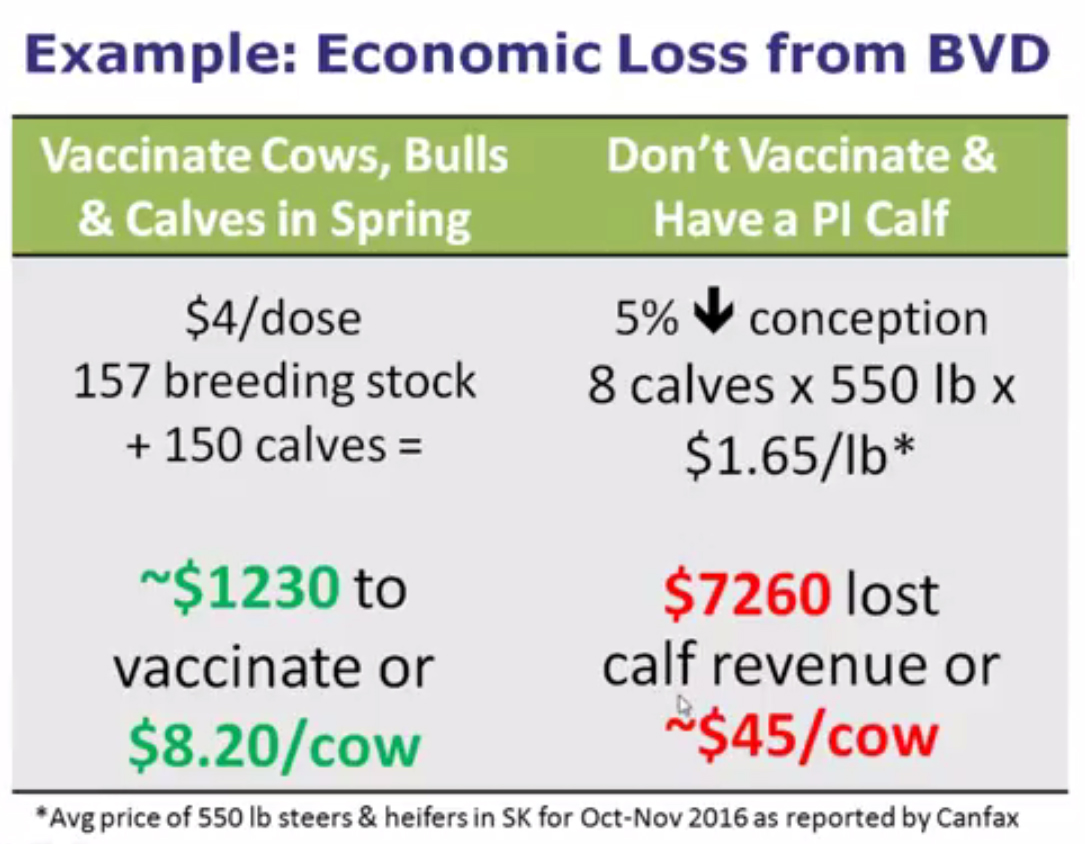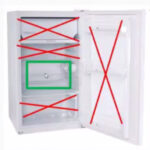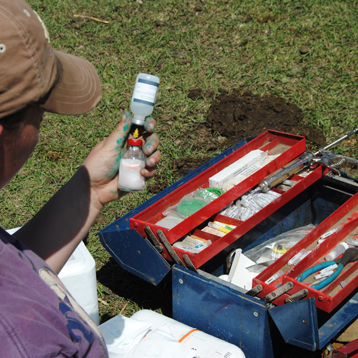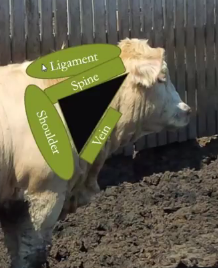Tips to Make the Most of Your Vaccine Protocol

Vaccines can seem costly, and it’s not easy to see how or to what extent they pay off. But cost-of-production analyses show that low-cost/profitable operations don’t cut corners when it comes to herd health. For example, the cost of a whole herd vaccination program for bovine viral diarrhea (BVD) virus in a 150 head cow herd (includes 157 breeding stock and 150 calves) is estimated at $8.20 per cow (assuming $4 per vaccine dose). If that herd wasn’t vaccinated and ended up with a persistently infected (PI) calf and 5% decreased conception due to BVD, they would suffer a loss of $45 per cow across the herd.
Kathy Larson, Economist at the Western Beef Development Centre, crunched those numbers for us during a recent BCRC webinar, illustrating that effective vaccination protocols developed for your herd with your veterinarian pay off.
Following her demonstration of the economics of vaccination, Dr. Nathan Erickson, Veterinarian at the Western College of Veterinary Medicine reminded producers that vaccines don’t eliminate disease completely but are able to significantly reduce the number of animals that get sick. Essentially, vaccines control disease, not prevent it.
Vaccines won’t be cost effective if they aren’t handled, stored, and administered properly.
Here are some of Dr. Erickson’s tips to help you make the most of your vaccine program
- Don’t store vaccines in the door of the frid
 ge (41:40)Vaccines are very temperature sensitive, especially modified live vaccines. When the door opens, items stored in the door fluctuate in temperature. The best place in the fridge to keep vaccines is on the middle shelves.
ge (41:40)Vaccines are very temperature sensitive, especially modified live vaccines. When the door opens, items stored in the door fluctuate in temperature. The best place in the fridge to keep vaccines is on the middle shelves.
- Do not wash syringes out with soap/disinfectant when maintaining them (47:13)
 Although you do want your syringes clean, washing with soap or disinfectants may leave residues that will interact with vaccines and make the vaccines less effective. A better solution is to pull the syringe apart and wash it with warm, clean water only (no soap) and scrub off any residues. Allow the syringe to fully air dry before reassembling it. When reassembling, apply some vegetable oil to the ring on the inside of the syringe to help it slide.You may also want to check the dosage accuracy of your multi-dose syringe by flushing out a particular unit of water into a disposable syringe and compare measurements.Also remember to change your needles frequently. Needles should be changed every time the syringe is being refilled to prevent contamination and once every 10 animals to prevent infection and broken needles.
Although you do want your syringes clean, washing with soap or disinfectants may leave residues that will interact with vaccines and make the vaccines less effective. A better solution is to pull the syringe apart and wash it with warm, clean water only (no soap) and scrub off any residues. Allow the syringe to fully air dry before reassembling it. When reassembling, apply some vegetable oil to the ring on the inside of the syringe to help it slide.You may also want to check the dosage accuracy of your multi-dose syringe by flushing out a particular unit of water into a disposable syringe and compare measurements.Also remember to change your needles frequently. Needles should be changed every time the syringe is being refilled to prevent contamination and once every 10 animals to prevent infection and broken needles. - Take extra care when handling modified live vaccines (42:47)
 Only mix what can be used in an hour. If these sensitive vaccines are not administered within 2 hours after mixing, they begin to lose their ability to control for disease. Mixing only enough for 1 hour gives you some leeway in case things go slower than planned.Avoid placing vaccine bottles and syringes in direct heat (on heating pads, the heater of your truck, or in the sun) or freezing (putting them on ice packs) because modified live vaccines are very temperature sensitive.Keep vaccines somewhere dark. Avoid exposing them to light for long periods of time.
Only mix what can be used in an hour. If these sensitive vaccines are not administered within 2 hours after mixing, they begin to lose their ability to control for disease. Mixing only enough for 1 hour gives you some leeway in case things go slower than planned.Avoid placing vaccine bottles and syringes in direct heat (on heating pads, the heater of your truck, or in the sun) or freezing (putting them on ice packs) because modified live vaccines are very temperature sensitive.Keep vaccines somewhere dark. Avoid exposing them to light for long periods of time. - Give vaccines in the neck and avoid the ligament (44:58)
 Be sure to read the label to determine if the vaccine needs to be given subcutaneous (SC) or intermuscular (IM). For SC, the black triangle in the picture on the right shows the proper location. If you are giving it to the animal while reaching from above, ensure you avoid the ligament, as you are more likely to go deeper than SC so the vaccine will not be absorbed properly and will therefore be less effective.
Be sure to read the label to determine if the vaccine needs to be given subcutaneous (SC) or intermuscular (IM). For SC, the black triangle in the picture on the right shows the proper location. If you are giving it to the animal while reaching from above, ensure you avoid the ligament, as you are more likely to go deeper than SC so the vaccine will not be absorbed properly and will therefore be less effective. - Talk to your veterinarian about when your animals are most at risk for diseases and ideal timing of vaccination (36:54)
A vaccine’s ability to control disease declines over time, and cattle are at risk for different diseases at different times. The best plan is to work with your veterinarian to figure out when your cows are at the highest risk for disease and coordinate your vaccine program so that animals reach their peak immunity around that high-risk time.For example, cattle tend to be at the highest risk for BVD abortion and PI infected calves within the first 3 months of pregnancy. Therefore a pre-breeding vaccine may be the best option as cows would have the highest levels of immunity when they are at the highest risk for infection.
For details and more tips, watch the full webinar:
Click here to subscribe to the BCRC Blog and receive email notifications when new content is posted.
The sharing or reprinting of BCRC Blog articles is welcome and encouraged. Please provide acknowledgement to the Beef Cattle Research Council, list the website address, www.BeefResearch.ca, and let us know you chose to share the article by emailing us at [email protected].
We welcome your questions, comments and suggestions. Contact us directly or generate public discussion by posting your thoughts below.